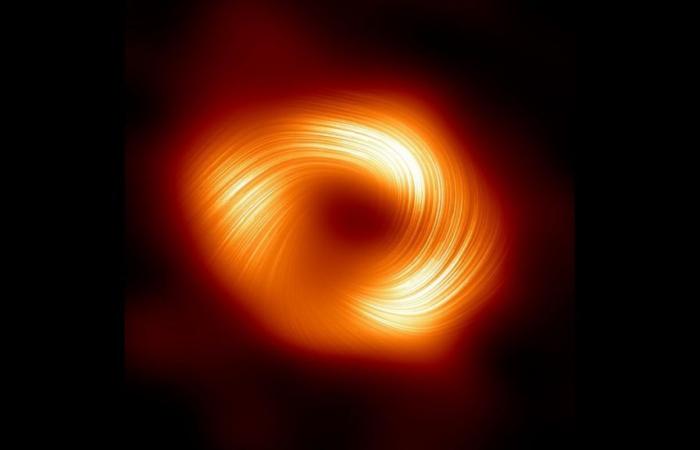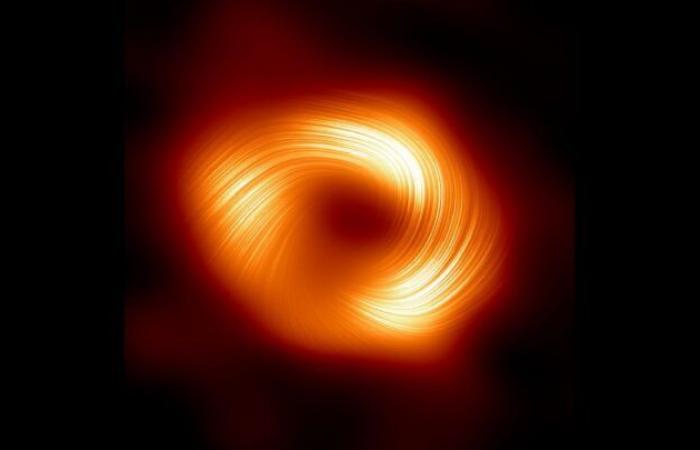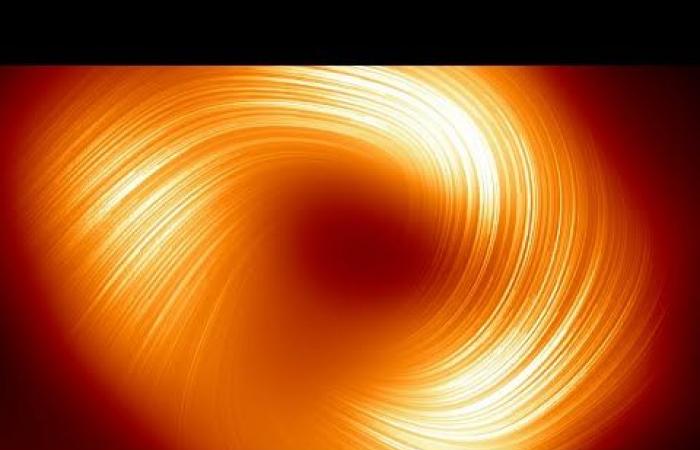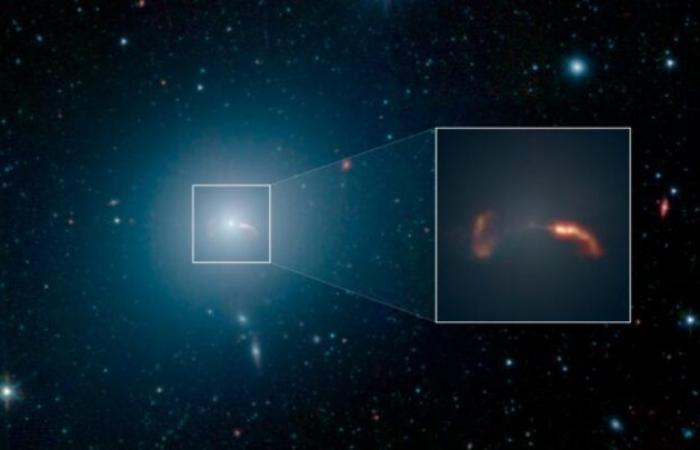One day, an entire galaxy could be devoured by this black hole. It’s called Sagittarius A*, it’s at the center of the Milky Way, it’s supermassive and astronomers have once again achieved a real image of polarized light. It should be noted that the images are incredible, captured at 26,000 light years… something like 24,610 trillion kilometers. So far away!
What does the image mean?
When we analyze the image, we can see a black dot, with colored, striated edges, with the idea of movement. Please note that we are seeing a real image. The central shadow is the black hole. Surrounding it is matter in a plasma state that it is absorbing. Lines are patterns of light that mark the orientation of polarization. They reveal strong magnetic fields spiraling from the edge of the supermassive black hole.
To capture this image, a virtual telescope the size of Earth is needed to obtain such a detailed image of a black hole. The Event Horizon Telescope (EHT) is a network of radio telescopes spread across the world that work together to do just that.
Unlike the first image of Sgr A*, this one looks at the black hole in polarized light. The plasma particles surrounding these objects have a polarization pattern perpendicular to their magnetic field. Observing its polarized light, the electromagnetic waves that vibrate in a certain orientation, makes it possible to map the magnetic field.
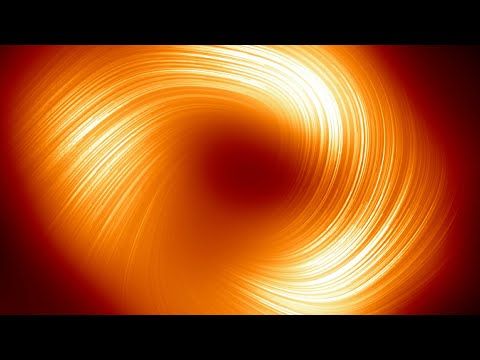
What does it reveal about Sgr A*?
The new image reveals that the supermassive black hole at the center of our galaxy is surrounded by very strong magnetic fields that affect the movement of matter around it. It is these magnetic fields that help prevent the plasma that revolves around the black hole from falling directly into the hole.
But the patterns of polarized light that reach us from 27,000 years ago depend not only on magnetic fields, but also on the curvature of the space-time through which the light propagates. Astronomers must cancel out the curvature effect to obtain true information about the orientation of the magnetic field.
And what could still be hidden?
The structure of Sgr A*'s magnetic field turned out to be surprisingly similar to that of the much larger and slower black hole at the center of the galaxy M87, suggesting that strong magnetic fields are common in black holes.
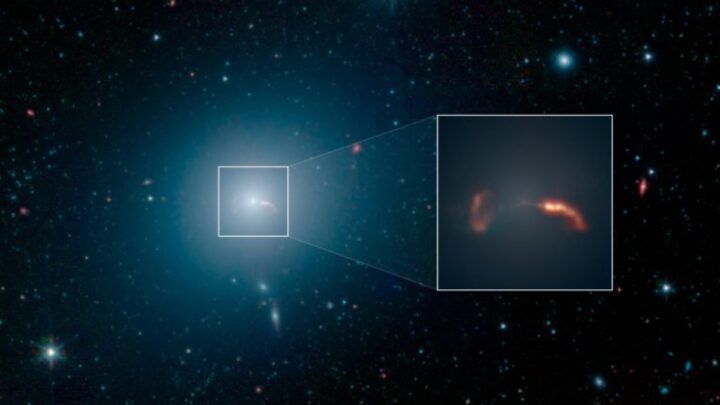
The first direct photograph of a black hole came from a galaxy known as Messier 87. Here is the image of the galaxy taken by the Spitzer Space Telescope, an infrared telescope launched in 2003 and still operating as of 2019. It is not possible to see the hole in itself in this image, but it is possible to see 2 massive jets of material (and their replicas), ejected from the disk of material rotating around the hole. Image via NASA/JPL-Caltech/IPAC.
This similarity has led astronomers to believe that there is a relativistic jet in Sagittarius A*.
A cannon that shoots plasma at speeds close to light as a result of all that magnetism. But the EHT community was unable to detect it, so more observations and comparisons with other black holes will be needed.

